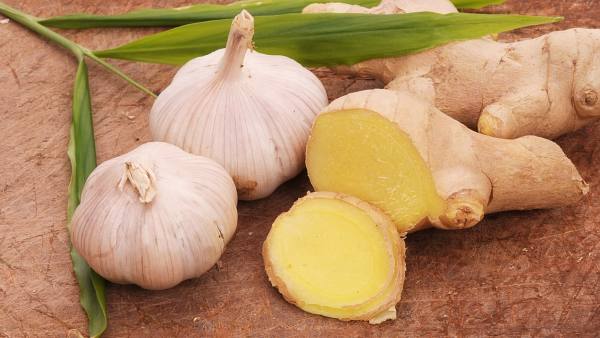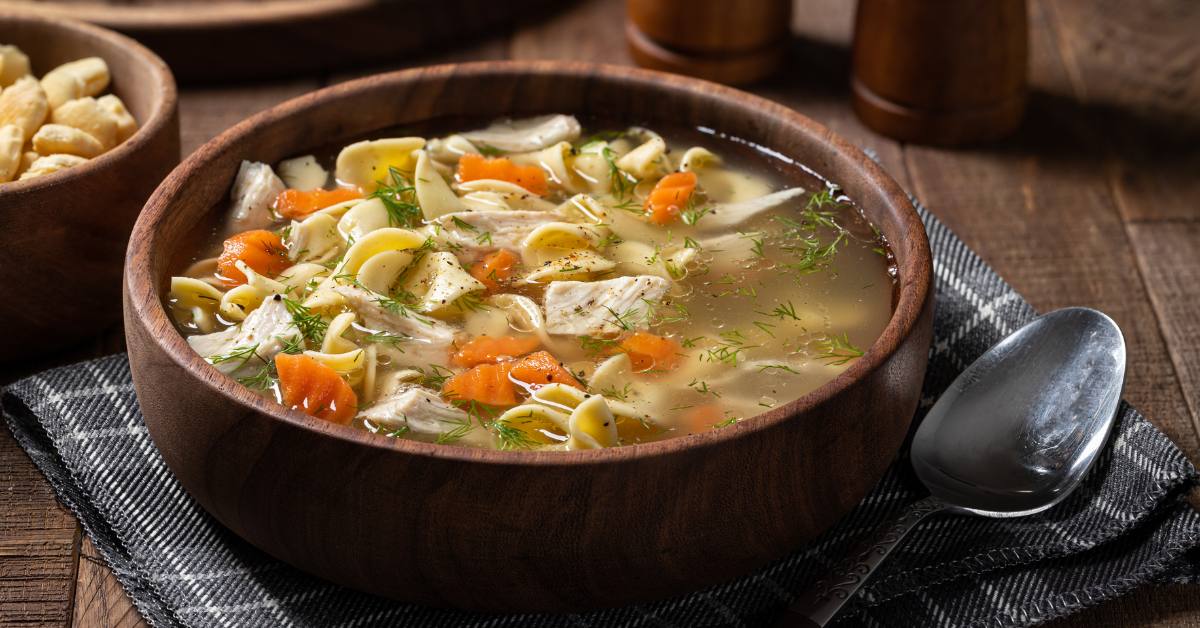The dog days of winter and close quarters with others can be a perfect recipe for getting sick. So fight back against that lost appetite, stay hydrated, and give your immune system the nutrients it needs by making soul-nourishing soup from scratch.
Aside from their comforting properties, soups are versatile, affordable, and nutritious. The variety of ingredients and combinations means you can experiment with different foods and gain the nutrients you need for good health.
Your guide to soup ingredients

If it’s your first time making soup from scratch, this ingredient guide will help. The pantry items will last until you need them next, making it easy to make soup anytime. This nutritious list of options offers a good starting point before putting it all together on the stovetop.
1. Pick your broth
Using water to make soup is perfectly fine. However, using low-sodium store-bought broth will intensify the flavour. It’s much faster than making one from scratch! Add even more flavour with your favourite herbs and seasonings (more on those below).
Include dairy products like yogurt and cream to thicken and add a layer of creaminess to your soup. For additional protein, use Greek yogurt. Dairy should be added at the end once the pot is off the stove because it breaks down quickly and can curdle when heated.
2. Add onion and garlic
Your sense of smell can influence how food tastes. Start with aromatic vegetables like onions and garlic to wake up your taste buds, make soup more flavourful and add more fibre. Sauté them first in the pot with olive oil to intensify the soup’s flavour and aroma.
3. Pick your meat or fish
Protein is an essential nutrient that all body cells need. From building to repairing muscles and tissues, protein is vital for making hormones and enzymes and supporting the immune system. Lean meats are excellent protein sources and can be one of the main ingredients of your soup. Cut the meat into chunks for an even flavour distribution throughout the soup. Brown the meat in the pot before you add the broth for a deep, roasted flavour.
4. Or choose lentils, beans, chickpeas, or green peas
Lentils, beans, chickpeas, and green peas, collectively known as legumes, are excellent plant-based proteins that can be used alongside or instead of meat. They are fibre-rich and perfect for a vegetarian or vegan diet or for anyone searching for a meatless, low-cholesterol meal.
Canned or dried legumes both work well. Dried legumes will take longer to cook and soften, while canned options speed up cooking time. Drain and rinse canned legumes to reduce sodium and improve flavour and texture.
5. Select your veggies
Sweet potato, squash, and carrots are some examples of hearty root vegetables that add sweetness to soups. In addition to adding bright colours to your soup, they add fibre and other essential vitamins and minerals that support your body to work properly.
Fresh, frozen, and canned are all great options that fit any budget. Leafy greens like kale, spinach, collard greens, cauliflower, and broccoli are another great source of vitamins and minerals, including iron and calcium. Plus, they add bright, fresh colours to your soup.
Brown root vegetables in the pot right after the onion, garlic and meat (if using). This helps to give the soup more flavour.
Leafy greens and stalky veggies should be added closer to the end of cooking to retain their colour and so they don’t become too soft and mushy.
6. Optional: add grain or pasta
Grains in soup make for a balanced and wholesome meal. If you add a heartier grain like rice or barley, add them at the same time as the broth to give them time to cook.
If you add pasta, like in chicken noodle soup, for example, add in the final 5-10 minutes of cooking. Too early, and they will become mushy. If you use rice or ramen noodles, soak them in hot water separately, then add them to the soup just before serving.
7. Choose your herbs
Whether you use dried or fresh herbs like basil, thyme, rosemary, or coriander, this amplifies the smell and flavour of soups. If you use fresh herbs, check out Canada’s Food Guide for buying, storing, and freezing tips.
8. Spice things up

Spices are traditionally used as a medicinal remedy to treat illnesses. Ground ginger, minced garlic, chilli powder, black pepper, paprika, cinnamon, cloves, thyme, and more, dress up your soup with an added touch of colour, aroma, and an extra kick of flavour or heat to your broth.
It’s best to add seasonings midway to allow the flavours to simmer with the other ingredients.
Put it all together
Now that you’ve decided on what ingredients to use, it’s time to make your soup:
- Heat a large soup pot over medium heat
- Sauté onions, garlic, celery, and carrots in olive oil
- Brown meat (if using)
- Cook veggies like carrots, sweet potatoes, squash, etc., until they start to soften
- Add water or low-sodium broth and tomatoes
- Add grains (like rice or barley if using)
- Add legumes, herbs, and spices
- Taste and adjust (add more pepper or herbs first before adding more salt)
- Allow to simmer for 30 minutes or so
- Add leafy greens and pasta or noodles for last 10 minutes of cooking
- Taste and adjust again if necessary
- Take pot off stove and add any cream, milk, or yogurt just before serving
That’s it! You’re now a soup-making pro, ready to take on any cold, flu, or dreary day.
Not quite ready to fly completely solo? Here are 3 easy-to-prep, delicious, nutritious, and freezer-friendly recipes with less than 10 ingredients:
Spiced-up Butternut Squash Soup
For additional soup and meal ideas, visit Canada’s Food Guide.
The takeaway
Whether you are under the weather or want to bundle up during the cold days, soups make a comforting, satisfying, and nutritious meal. Soups are an excellent meal option, no matter your comfort level in the kitchen. Easy to make, whether from scratch or with a recipe, soups combine various colourful, nourishing and whole ingredients that are low-cost and easy to keep on hand.
What are your go-to soups when you are feeling under the weather? Share your favourite recipe in the comments below.



I love to make my own soup. Novella Rui, RD provides wonderful tips and ideas.
Each month I will look forward to reading the News Letter for men from Don”t Change Much.